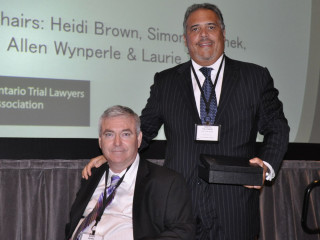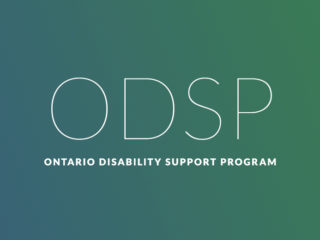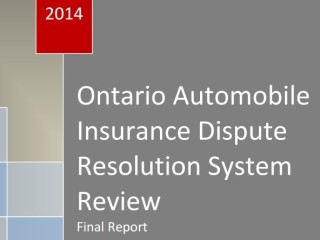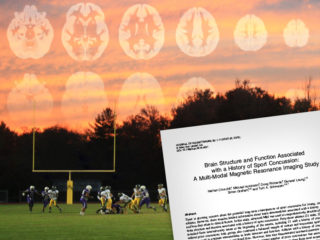An April 13, 2016 decision by Justice Hackland in Ottawa has provided further guidance on the notice requirements before an insurer can perform a section 33 Examination Under Oath. A generic statement that the insurer requires an examination under oath to determine the insured’s entitled to statutory accident benefits will not suffice.
Released April 26, 2016 | Full Decision [CanLII]
In State Farm Mutual Automobile Insurance Company v Aslan et al 2016 ONSC 2725, the insurer sought s.33 examinations under oath in respect of claimants who had been injured between 2011 and 2013 and had been deemed catastrophically impaired. The claimants were in receipt of attendant care benefits. The s.33 request came after State Farm began an investigation into the validity of the attendant care claims. The s.33 notice consisted of a courtesy letter to counsel for the claimants. The letter simply stated that State Farm “required an examination for the purposes of determining whether State Farm is liable to pay benefits.”
The Statutory Framework
Section 33(4) of the SABS states:
(4) The insurer shall make reasonable efforts to schedule the examination under oath for a time and location that are convenient for the applicant and shall give the applicant reasonable advance notice of the following:
- The date and location of the examination.
- That the applicant is entitled to be represented in the manner described in subsection (3).
- The reason or reasons for the examination.
- That the scope of the examination will be limited to matters that are relevant to the applicant’s entitlement to benefits.
(5) The insurer shall limit the scope of the examination under oath to matters that are relevant to the applicant’s entitlement to benefits described in this Regulation.
State Farm v. Aslan dealt primarily with the sufficiency of the “reasons” given under the s.33(4)3 notice.
Interestingly, a few weeks before Aslan, State Farm was successful in a similar application before the Financial Services Commission. In Kivell v. State Farm FSCO A14-008358 (March 18, 2016), the insurer’s s.33 notice consisted of a statement that
“The examination pertains to the motor vehicle accident that occurred on November 20, 2012, and her entitlement to statutory accident benefits as a result of that motor vehicle accident. I can also advise that the scope of the examination will encompass but will not be limited to questions pertaining to her entitlement to medical and rehabilitation benefits, including facts surrounding her attendance at facilities; her entitlement to income replacement benefits, including facts surrounding her employment history and current and prior levels of functioning and activities; questions pertaining to visitor’s expenses…”
The Examination Under Oath was objected to because of the insufficiency of the reasons given or were required to be given under s.33(4)3. The Arbitrator held that the requirement to provide reasons was one of form, not substance, and the insurer’s explanation of the scope of the examination (i.e. to satisfy s.33(4)4) was sufficient to also meet the requirements of s.33(4)3. “Accordingly, any wording that alerts the Applicant that questions will be asked about the matters giving rise to the claim is sufficient to comply with the requirement. The reason or reasons do not have to be detailed, they merely have to give the Applicant notice about the general type of questions that will be asked.”
Justice Hackland’s decision in State Farm v Aslan
When the plaintiffs’ counsel refused to produce her clients for the examination under oath, State Farm brought a motion before Justice Hackland to enforce attendance. The issue at the motion was the essence of s.33(4)3, namely, the extent of the reasons required in the s.33 notice.
State Farm relied on Kivell v. State Farm and argued that its generic, broad-form statement contained in its courtesy letter – namely, that it “required an examination for the purposes of determining whether State Farm is liable to pay benefits” – was all that was required under s.33(4)3, as the obligation to provide “reason or reasons” was a matter of form and not substance. State Farm also argued that to require more than just a generic statement would remove a tactical advantage and possibly inhibit or hinder exploration of the benefit entitlement question it intended to explore in the examination.
Justice Hackland disagreed. He held that Section 33 sought to achieve a balance between an insurer’s right to properly determine eligibility for benefits with the insured’s rights to convenience and fairness in the process by, inter alia, a right to be told in advance of the reasons for the examination. The “notice” must be meaningful. This is consistent with the insurer’s duty of good faith owed to the insured, and general considerations of fairness to both parties.
Hence, in order for meaning to be given to s.33(4)3, the “reasons” to be set out in the s.33 notice must be something more than just simply stating that the examination will relate to the insured’s entitlement to accident benefits. Specificity is required.
In the context of the present issues, s.33(4)3 would require State Farm to advise the respondents that the reason for the Examination Under Oath was to review the claims submitted for attendant care. Among other benefits, this would allow the insured and his or her representative to come prepared to discuss that issue and possibly to brief counsel and to bring along relevant documentation.
It is also worth noting that a distinction was drawn between ss.33(4)3 and 33(4)4. S.33(4)4 requires the insurer to give notice of the scope of the examination. Justice Hackland found that State Farm met its requirements under this subsection, but held that this was not sufficient to also satisfy the requirements of 33(4)3. The Arbitrator in Kivell blurred the distinction between these subsections and held that notice of the scope of the examination also satisfied the requirement to give reasons. Justice Hackland disagreed, holding that “Subsections 33(4)3 and 33(4)4 are quite separate and give rise to separate obligations.”
State Farm’s application was dismissed. The claimants were not required to attend the s.33 examination until State Farm served proper notice.
Read the full decision on CanLII












